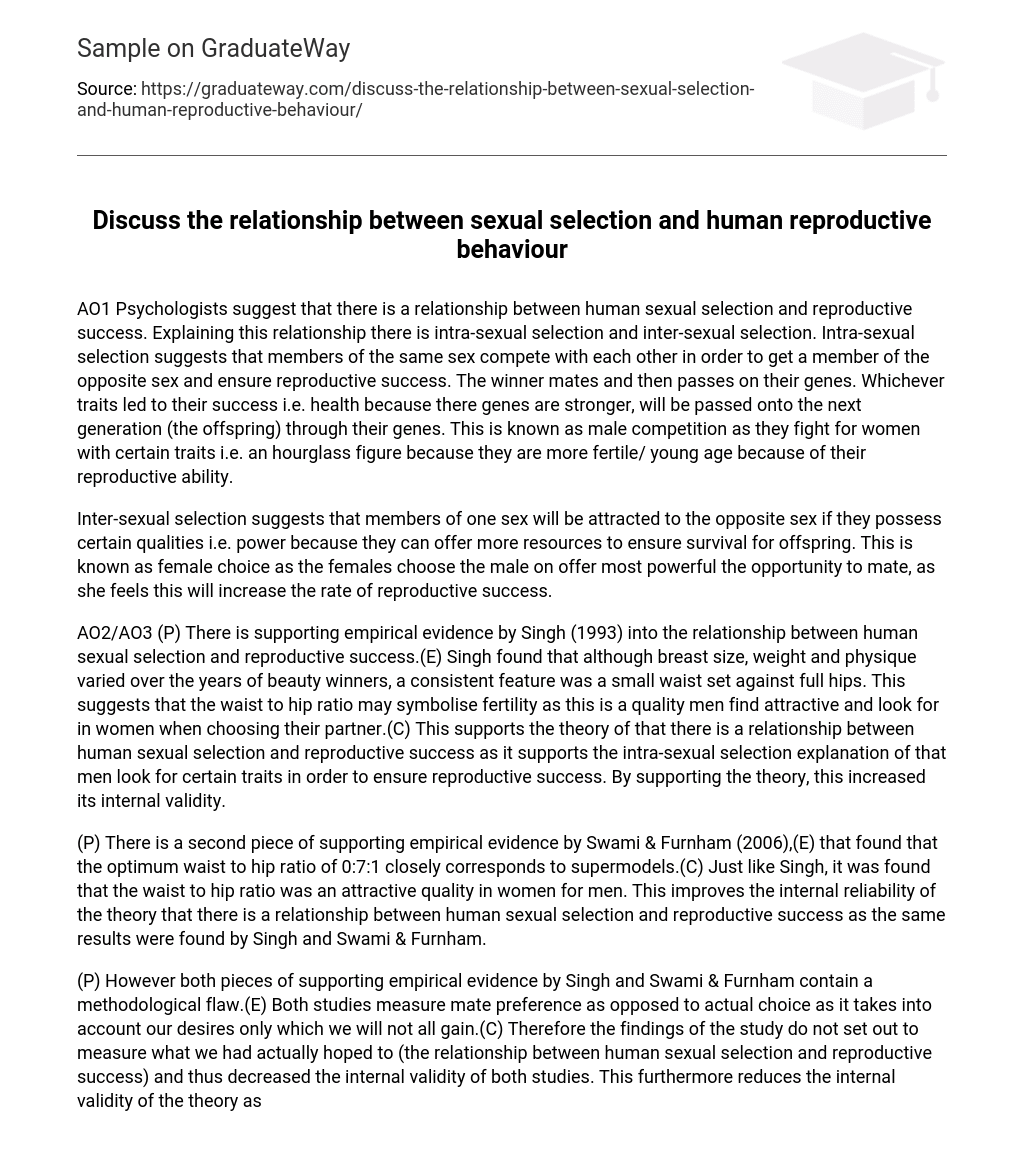Psychologists propose a link between human sexual selection and reproductive success. This connection is explained through intra-sexual selection and inter-sexual selection. Intra-sexual selection refers to competition within the same sex to secure a mate of the opposite sex, ensuring reproductive success. The victorious individual reproduces and passes down their genes. The specific traits that contributed to their triumph, such as good health indicating stronger genes, are inherited by the next generation (offspring) through their genes. Known as male competition, men vie for women possessing certain traits, such as an hourglass figure that signifies fertility or a young age indicative of reproductive ability.
Inter-sexual selection, also known as female choice, suggests that members of one sex will be attracted to the opposite sex if they possess certain qualities, such as power, because they can offer more resources to ensure survival for offspring. The females choose the most powerful male on offer in order to increase the rate of reproductive success.
AO2/AO3 (P) Singh (1993) conducted research providing empirical evidence on the link between human sexual selection and reproductive success.(E) Singh’s findings indicate that beauty winners may vary in terms of breast size, weight, and physique over time, but consistently possess a small waist in contrast to full hips. This suggests that a low waist-to-hip ratio may symbolize fertility, which men find attractive and prioritize when selecting a partner.(C) These findings support the theory that there exists a connection between human sexual selection and reproductive success, specifically aligning with the intra-sexual selection explanation that men seek certain traits to ensure successful reproduction. Consequently, this strengthens the internal validity of the theory.
There is additional evidence from Swami & Furnham (2006) that supports the theory of a relationship between human sexual selection and reproductive success. They found that a waist to hip ratio of 0.7:1 closely matches that of supermodels, similar to the findings of Singh. This suggests that the waist to hip ratio is an attractive quality in women for men, further reinforcing the reliability of this theory.
(P) Singh and Swami & Furnham’s empirical evidence, although supportive, contains a methodological flaw. (E) Both studies measure mate preference rather than actual choice, which only takes into consideration our desires and not everyone’s ability to achieve them. (C) Thus, the findings do not accurately measure the desired relationship between human sexual selection and reproductive success, reducing the internal validity of both studies. Consequently, the theory’s internal validity is also compromised since its supporting empirical evidence is weakened by methodological flaws.
(P) Another piece of empirical evidence from Davies (1990) supports the theory that there is a relationship between human sexual selection and reproductive success. (E) Davies concluded that there are sexual strategies in human selection after observing that both males and females attempted to enhance their perceived fertility and ability to raise offspring. (C) These findings demonstrate that both sexes adapt their sexual selection in order to ensure reproductive success, thus supporting the theory’s internal validity.
Davies’ study has received criticism for a methodological flaw. The study focused on chimpanzees, thus its findings are limited to animal studies. Consequently, the research cannot be applied to sexual selection in humans and human reproductive success. This undermines the population validity of the study and weakens the theory’s internal validity, as its supporting empirical evidence is now less compelling.
(P) The theory of a relationship between human sexual selection and reproductive success has been criticized for being deterministic.
(E) According to the intra-sexual selection explanation, men seek certain traits in fertile women, such as young age. However, this explanation overlooks the influence of personal choice and individual differences in perceiving attractive traits.
(C) Consequently, the theory fails to account for the connection between human sexual selection and reproductive success in all romantic relationships. Its inability to provide a comprehensive explanation diminishes its external reliability.
(P) The theory has received criticism for its inability to explain the nature of partner selection in homosexual relationships, as it only considers the evolutionary perspective of sexual selection and reproductive success between opposite sexes. (C) Consequently, this theory fails to provide a comprehensive explanation for all romantic relationships, specifically homosexual relationships, thereby compromising its external reliability.





